#sancho vii
Text
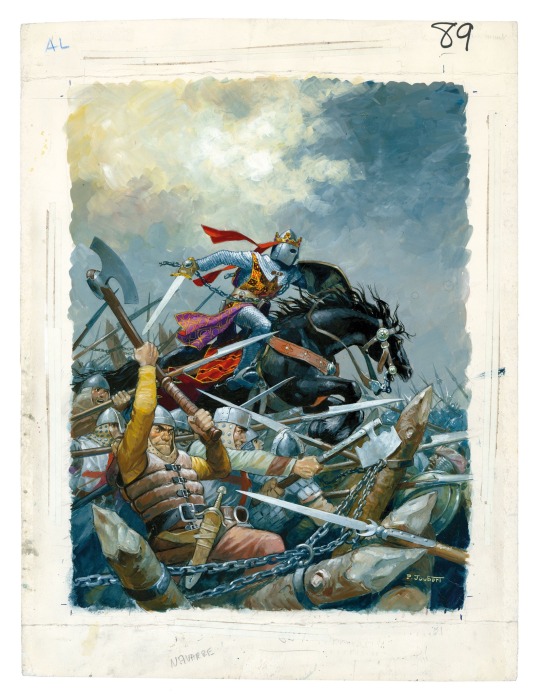
Sancho VII of Navarre at the Battle of Las Navas de Tolosa
by Pierre Joubert
#pierre joubert#art#sancho vii#king#navarre#battle of las navas de tolosa#heraldry#history#reconquista#medieval#middle ages#knights#knight#cavalry#spain#chivalry#christian#europe#european#crusade#crusades#christianity#crusaders#crusader#christendom#horse#iberian peninsula#iberia
178 notes
·
View notes
Photo
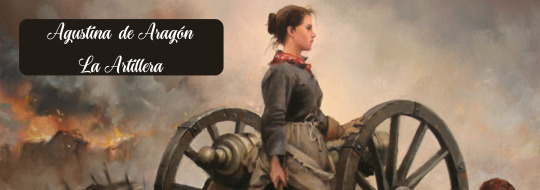
Agustina de Aragón, Casta Álvarez and other heroines of the siege of Zaragoza
In 1808, the Spanish city of Zaragoza was besieged by the armies of Napoleon Bonaparte. The Peninsular war was raging as the Spanish people resisted the French occupation.
Women distinguished themselves in defense of their homes. One of them was Agustina Raimunda María Zaragoza Doménech (1786-1857), also known as Agustina de Aragón.
Defender
In 1803, she married Juan Roca Vilaseca, a corporal in the Spanish Artillery. Since her husband had been stationed in Zaragoza in 1808, Agustina was present when the French troops besieged the city.
Many of the Spanish defenders of the strategic Portillo Gate had been wounded or killed following the French assaults. The enemy was beginning to storm the city. Agustina, who had been carrying food and water to the soldiers, stepped into the breach, retrieved a still-burning wick from the hand of a fallen gunner, and fired the cannon at the advancing French soldiers. Her courage rallied the defenders who repelled the assailants, thus saving the gate.
The Spanish Commander in Zaragoza, José de Palafox, heard of her bravery and rewarded her. Her exploit also won her international fame. Lord Byron wrote, for instance, a poem in her honor.
Zaragoza’s other heroines
She wasn’t the only woman to take arms. Another was Casta Álvarez (1786-1846). Armed with a bayonet, she defended the Sancho Gate and was later awarded a pension by King Ferdinand VII.
Manuela Sancho (1783-1863) fought to defend the San José convent, riffle in hand. María de la Consolación Azlor, countess of Bureta, (1773-1814) organized a battery to repel a French assault on her home. The names of Benita Portales, Juliana Larena, and María Lostal are also remembered. Women also nursed the wounded and brought food and drink to the soldiers. María Agustín (1784-1831) was, for instance, wounded when bringing ammunition to the defenders.
This first siege ended on August 14, 1808, but the French returned to besiege the city on December 19, 1808. Agustina wanted to fight but had contracted typhus and could only watch from her sickbed as the city was taken. Captured by the French, she and her son were forced to march to the frontier among a column of prisoners. She would probably have died if an officer had not placed her on the back of a mule. Agustina made it to Puenta de la Reina where she escaped. Her son died shortly afterward.
Ensign
Agustina reached the nearest headquarters of the Spanish army. She was made an ensign and served with her unit in Seville. She later fought in the defense of Tortosa and the battle of Vitoria, though her participation in the latter is subject to doubt.
After the end of the war in 1814, Agustina followed her husband to various military posts. After he died in 1823, she remarried to a doctor. She died in Ceuta on 29 May 1857.
Further reading
Esdaile Charles J., Women in the peninsular war
Fernandez Gilbert G., “Agustina de Aragón”, in: Bernard Cook (ed.), Women and war, an historical encyclopedia from antiquity to the present vol.1
Lawrence Tone John, “Aragón, Augustina”, in: Higham Robin, Pennington Reina (ed.), Amazons to fighter pilots, biographical dictionary of military women, vol.1
Navascués Alcay Santiago, “Casta Álvarez Barceló”
Solduga Francisco Javier, “La Artillera del Portillo”
#Agustina de Aragón#Casta Álvarez#Manuela Sancho#María de la Consolación Azlor#history#women in history#spain#spanish history#warrior women#napoleonic wars#peninsular war#siege of zaragoza#zaragoza#women warriors#warriors
51 notes
·
View notes
Text
Canto VII/Season 5 Abnormality Speculation
Ok, so each abnormality that is either part of a sinner's dungeon or their season pass egos (In the case of Heathcliff) usually has some connection/symbolism for them ala each of the ego used during Realizations in Library having some symbolism towards the emotions/memories displayed within. Since we have a pretty damn big list of mirror dungeon abnormalities and they seem to primarily draw on those for new bosses as opposed to making new ones, I'ma speculate on some options for things we'll face in Don's personal dungeon.
Pagoda Veneration

This one is pretty self explanatory. It's focused around wishes and the granting/destruction of them, which fits Don's character to a tee to the point she already has an EGO for it.
Rose Hunter
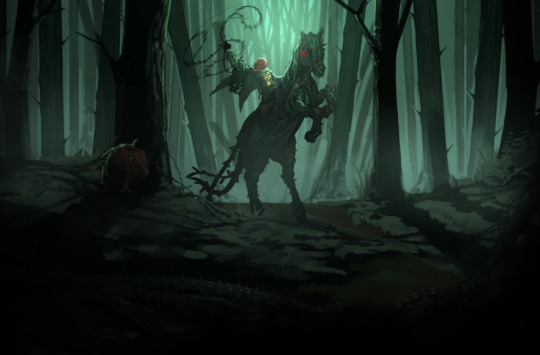
So, this abnormality is effectively a rogue hunter that seeks to bring Snow White's Apple (Or Ebony Apple, possibly both) back to fulfill the role they had in the original tale. Effectively, cutting their dreams short to drag them back to their original fate, which could possibly be the problem Don faces in her Canto or faced in her own past. It would effectively represent reality trying to drag her back down.
Sleepyhead

This one mainly correlates to Don's fascination and association with toys, along with it giving a lust gift which matches the Sin of Don's base ego. It also has a blood motif in that you need to offer it blood to get its head to raise back up to give you the gift, which also matches with Don's base ego translating to "Blood of Sancho".
Tomorrow's Expression

Tomorrow's Expression is an Aberration of Today's Shy Look, which in Library stood-in for Angela's having to mask her true desires to reach out to the others in order to fulfill the Seed of Light plan. Tomorrow's Expression is effectively Shy Look's opposite, being something that asks how it should express itself as opposed to something that wanted to find a way to express its own emotions. This can correlate to the possible origins of Don and her worldview, and the original story of Don Quixote and how people tried to cruelly snap Don out of his delusions.
#I'll probably make a follow up to this when the fourth Mirror Dungeon comes out and probably contains VII's actual abnos#but I wanted to get this out of the way because it's fun to speculate#BTW if you're wondering about any other sinners I don't have much but I can guarantee you one thing#Those hospital-themed abnormalities with greek mythology names are definitely showing up in Outis' canto#they match so fucking perfectly#anyways ramble over#Limbus Company#Don Quixote LCB
18 notes
·
View notes
Text
im curious about everyones predictions for future chapters, how you think stories will be adapted from the source material in the books. (or if you havent read any of the books the sinners are based on a want to see your wild guesses!)
(my predictions under the cut, i havent read any after metamorphasis yet but im familiar with basic plots and stuff? i may get the themes or something of each book drastically wrong but honestly thats the fun of this)
canto V- ishmael meets up with all her old sailing friends!! (the ones who arent dead at least, maybe queequeg mets up with her and tells her about the tragic fates of the others), maybe she fights the whale? maybe she learns to accept that she never needed to kill that whale in the first place. either way, she wont be so haunted by that darn whale after this chapter. i saw someone say that her mili song should be a sea shanty nd i agree WHOLEHEARTEDLY. it will be a sea shanty nd it will be a BANGER.
canto VI- catherine appearance followed by heathcliff rampage, i have to assume theyll be very protective of each other, his mili song will start loud and angry then maybe get calmer in the second half
canto VII- don quixote isnt her real name. WINDMILL THEMED ABNORMALITIES. sancho appearance? spanish in the mili song? (unlikely but i can dream)
canto VIII- (i know next to nothing about his book) a visit to hong lu's family mansion, the sinners get to enjoy luxury for a few days! maybe theyll get to meet his siblings, maybe one of his siblings will be the main enemy? someone (dante, donqi or hong lu himself) finds out the secret behind how his family became so so rich and it starts the conflict of the chapter over it being evil (theres no way any rich peraon in THE CITY isnt doing something unspeakably bad, especially with how much of that sort of commentary ia in project moon games.) mili song has verses/phrases in chinese (much more likely than spanish)
canto IX- ryoshu is revealed to have been a big name artist, maybe famous enough that another sinner had heard of her nd gets to be shocked by finding out. shes also revealed to have a daughter who died, everyone is super shocked over how she could have a kid, maybe she learns over the course of the dungeon how to grieve for her instead of just smoking nd isolating herself to cope. after this shes more social with the other sinners
canto X- he killed someone, the other sinners find out. they all kill people daily for their job or in their backstory but its somehow different and (some of them) freak out over it. he may be a wanted criminal in the area they visit?
canto XI- we see all the war crimes outis committed, ive seen someone else predict that outis would betray dante, which i think would be interesting with how much she sucks up to them! we know that she doesnt actually think very highly of them from when she slips up a few times, but shes so militant that she has to respect their higher rank.
canto XII- either this will be the final one, or dante (maybe vergilius too) will have one afterwards. either way, a lot of mysteries will be revealed here. what the golden boughs do, how faust and vergilius met, why limbus company was founded, what mephistopheles even is and how faust built it, lots of secrets!
11 notes
·
View notes
Text

Berenguela de Barcelona
She was a very beautiful and extremely graceful young girl who loved chastity and truth and all God-fearing people.
Berenguela was the daughter of Ramon Berenguer III, Count of Barcelona and his third wife Dolça I de Gévaudaun, Countess of Provence. Although her date of birth is unknown, the sources place it between 1108 and 1116. It is known that Berenguela had a good relationship with her older sister, María de Osona, who was the daughter of the first marriage of her father with María Rodríguez, the daughter of El Cid Campeador.
In 1128 Berenguela married Alfonso VII, King of León, Castile and Galicia. She becoming the first queen of the newly reigning dynasty of the House of Ivrea. In 1135, Alfonso VII was crowned “Emperor of Spain” (Imperator totius Hispaniae) in the Cathedral of León. The imperial couple had seven children, of whom Sancho III was King of Castile and Fernando II King of León. The daughters, Constanza and Sancha, became Queens consorts of France and Navarre.
Historians who have dedicated to studying her life consider that Berenguela de Barcelona was one of the characters who deserves a privileged position in the history of Spain. She actively participated in political life and was patroness of the arts. She accompanied her husband in the battles, stopped the uprising in Asturias and heroically resisted the besieged of Toledo by the Muslims. She also introduced a taste for Provencal troubadours to the kingdom, supported writers who narrated the exploits of El Cid and encouraged pilgrimages to Santiago de Compostela, where she was buried in 1149.

Berenguela nació en el prestigioso y rico condado de Barcelona como hija del conde Ramón Berenguer III y de su segunda esposa Dulce de Provenza. La joven barcelonesa destacó por su inteligencia y gran belleza, llegando su fama hasta la corte del rey Alfonso VII de Léon, Castilla y Galicia, hijo de la legendaria reina Urraca. Al parecer fue un noble, Armengol de Urgel, quien le facilitó los trámites para entrar en contacto con los condes de Barcelona. El rey de León tenía poco más de veinte años y no estaba casado, ni siquiera había ninguna candidatura seria para un matrimonio, que tarde o temprano tendría que celebrarse.
Una vez prometida al rey Alfonso VII, Berenguela de Barcelona emprendió un largo viaje. Desde Barcelona hasta la corte de su futuro marido, debía cruzar los dominios del rey aragonés Alfonso el Batallador, quien estaba en disputa con Castilla por cuestiones territoriales y fronterizas. Para evitarlo, Berenguela y su comitiva tuvieron que hacer parte del viaje por el sur de Francia, llegar hasta el Golfo de Vizcaya y fletar unas barcazas que, bordeando la costa cantábrica, les permitieran desembarcar en un puerto controlado por los leoneses.
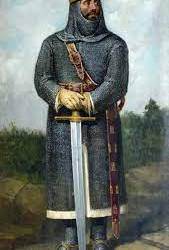
A finales de 1128 o enero de 1129, los prometidos contraían matrimonio en la villa de Saldaña. Con motivo de las celebraciones de los esponsales, que duraron varios días, se dice que tuvo lugar la primera corrida de toros celebrada en la Península. La pareja imperial tuvo siete hijos, destacándose Sancho III de Castilla y Fernando II de León. La joven reina forjó una gran amistad con su cuñada la infanta Sancha Raimúndez, llegando a ser ambas las principales consejeras de Alfonso VII. Berenguela participó en la política de forma activa, fue la principal responsable de apagar la rebelión del conde de Asturias Gonzalo Peláez y acompañó a su esposo a la guerra en muchas ocasiones, participando así de sus victorias.
En 1135 tuvo lugar la coronación de Alfonso VII como Imperator totius Hispaniae en la catedral de León, gran parte de los nobles presentes en el acto habían llegado gracias a los contactos de la reina y su familia; así su hermano Ramón Berenguer IV, Armengol de Urgel, el conde Alfonso Jordán de Tolosa, el de Montpellier, el duque de Gascuña, el de Foix y otros grandes señores del Sur de Francia. A ella, entonces, cupo el gran honor de ser la Emperatriz consorte de Hispania.

Nos dice la crónica de Alfonso VII que en 1139 la reina Berenguela fue la responsable de una heroica resistencia en Toledo. Habiendo partido su marido al sitio del castillo de Aurelia, encargó a su esposa la defensa de la ciudad. Pero la campaña se alargó demasiado y Toledo fue sitiada por las tropas musulmanas. Berenguela reunió un pequeño ejército, pero, consciente de su inferioridad, decidió intentar una jugada diplomática para tratar de evitar la lucha. Indignada por la destrucción de la torre de San Servando, cercana a la ciudad, Berenguela envió un mensajero con una carta al campo enemigo que decía lo siguiente:
"¿No conocéis que es mengua de caballeros y capitanes esforzados acometer a una mujer indefensa cuando tan cerca os espera el emperador? Si quereis pelear id a Aurelia y allí podréis acreditar que sois valientes, como aquí dejar demostrado que sois hombres de honor si os retiráis".
La reina Berenguela apareció además sentada sobre un trono real en una de las torres, rodeada de sus doncellas, que cantaban con tímpanos, cítaras, címbalos y salterios. Los musulmanes quedaron impresionados por la nobleza de la reina y levantaron inmediatamente el cerco, marchando a luchar contra Alfonso. Cuando el alcaide de Toledo, Nuño Alfonso, entró victorioso en la ciudad portando las cabezas de los emires de Sevilla y Córdoba, las mandó colgar de las torres del alcázar, pero la reina se apiadó, ordenando que las embalsamaran y enviaran a sus viudas en cofres de oro. Una torre en Toledo (la Torre de la Reina) recuerda la gesta de la reina Berenguela.
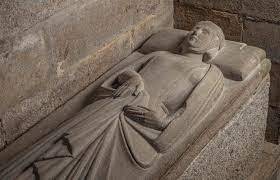
Berenguela es recordada como una prudente reina que sacrificó sus sentimientos dando prioridad a los intereses de la corona. Cuando de las infidelidades de su esposo con la noble asturiana Gontrodo Pérez nació una hija, doña Urraca, la reina perdonó a su esposo y quiso ganárselo mediante el cariño. Aún más, cuando Urraca casó con el rey de Navarra García el Restaurador, la reina Berenguela se encargó de preparar los esponsales con gran pompa y asistió, dando gran realce a la ceremonia. Mujer culta, Berenguela fue una gran mecenas y amante de las artes, a ella se debe el impulso de la poesía provenzal en el reino, apoyó a escritores que narraban las hazañas del Cid y fomentó el peregrinaje a Santiago de Compostela, donde fue enterrada. Su muerte fue muy lamentada, tanto que, según los historiadores de la época, el año 1149 fue usado en los documentos como punto de partida para fechar los acontecimientos, bajo la fórmula "año en que falleció la señora emperatriz".
#Berenguela de Barcelona#Berenguela Berenguer#Berengaria of Barcelona#Spanish history#women in history#Alfonso VII
25 notes
·
View notes
Text
¡Conoce la apasionante historia de la Dinastía Jimena!
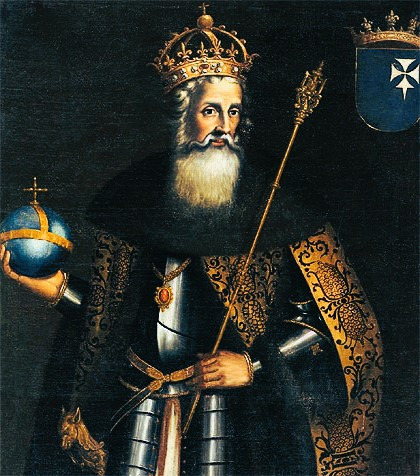
La Dinastía Jimena, también conocida como dinastía Íñiga-Jimena, gobernó el Reino de Pamplona (posteriormente Navarra) durante más de 300 años, desde el año 905 hasta 1234. Su legado está marcado por la expansión territorial, la consolidación del reino y la lucha constante contra los reinos vecinos.
Su origen se remonta a Jimeno Garcés, un noble vascón que luchó contra la invasión musulmana en la península ibérica. Su hijo, Sancho Garcés I, fue quien consolidó la dinastía al ascender al trono de Pamplona en el año 905.
Algunos de los monarcas más destacados de la Dinastía Jimena fueron:
Sancho III el Mayor (1004-1035): Expandió el reino hacia el sur, conquistando territorios como Nájera, Calahorra y Viguera. También estableció relaciones diplomáticas con los reinos cristianos y musulmanes de la península.
Sancho IV el de Peñalén (1054-1076): Se enfrentó a una guerra civil contra sus hermanos, pero logró mantener la unidad del reino. Durante su reinado se produjo la conquista de Tafalla.
Alfonso I el Batallador (1104-1134): Conquistó Zaragoza y Tudela, convirtiendo a Navarra en uno de los reinos más poderosos de la península. Participó en la Reconquista y luchó contra los almorávides.
Sancho VII el Fuerte (1194-1234): Conocido por su gran fuerza física y su valor en la batalla. Participó en la batalla de las Navas de Tolosa contra los almohades.
La Dinastía Jimena llegó a su fin en el año 1234 con la muerte de Sancho VII el Fuerte sin descendencia. El trono de Navarra pasó entonces a la dinastía de Champaña.
¿Qué te ha parecido la historia de la Dinastía Jimena? Cuéntanos en los comentarios qué monarca te ha llamado más la atención y por qué.
2 notes
·
View notes
Text
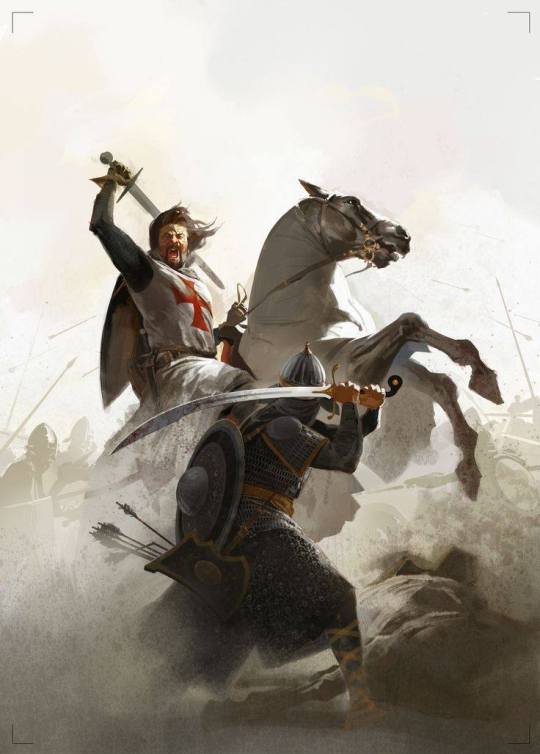
Los Caballeros Templarios.
Fue una de las más poderosas órdenes militares cristianas de la Edad Media. Se mantuvo activa durante algo menos de dos siglos. Fue fundada en 1118 o 1119 por nueve caballeros franceses liderados por Hugo de Payns tras la Primera Cruzada. Su propósito original era proteger las vidas de los cristianos que peregrinaban a Jerusalén tras su conquista.La orden del temple Aprobada oficialmente por la Iglesia católica en 1129 Los caballeros templarios tenían como distintivo un manto blanco con una cruz paté roja dibujada en él. Militarmente, sus miembros se encontraban entre las unidades mejor entrenadas que participaron en las Cruzadas En España la orden comienza su implantación en la zona oriental de la Península Ibérica en la década de 1130. En 1131, el conde de Barcelona, Ramón Berenguer III,pide ingresar en la orden. Ante la incursión almohade, los templarios lucharon en el ejército cristiano, venciendo en la batalla de Las Navas de Tolosa (1212) junto a los ejércitos de Alfonso VIII de Castilla, Sancho VII de Navarra y Pedro II de Aragón .,Los templarios ayudaron a repoblar zonas conquistadas por los cristianos, creando asentamientos en los que edificaban ermitas Fuente Templar.
"Non nobis, Domine, non nobis. Sed Nomini Tuo Da Gloriam"
"No a nosotros, Señor, no a nosotros. Sino a Tu nombre sea dada la gloria" .
4 notes
·
View notes
Text

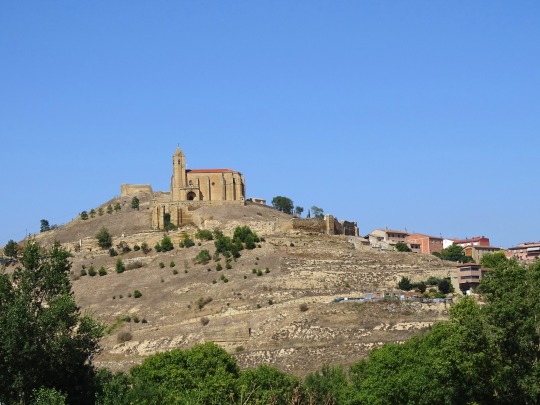










San Vicente de la Sonsierra, Spain (No. 3)
On January 6, 1172 Sancho VI of Navarre granted the charter of Laguardia to San Vicente and his alfoz. This was similar to the Fuero de Logroño.910His son Sancho VII of Navarre in 1194 built the castle and walled the area. Also in 1212 after the battle of Las Navas de Tolosa granted the coat of arms of the chains to the House of the Pool.
During the thirteenth century there were many struggles with the nearby castle of Briones. In 1367 she was involved in the war between Pedro I the Cruel and Enrique de Trastámara. Henry's troops, unable to seize the castle, burned the villages of San Vicente except for Ábalos. At the end of the conflict the village was in Navarrese hands. In 1373 a new treaty between Castile and Navarre returned Logroño to Castile, and continued to leave San Vicente within the kingdom of Navarre.
Due to the resistance of the inhabitants of the area against the troops of Enrique de Trastámara, Carlos II of Navarre granted nobility to its inhabitants and their descendants. With this he also sought to "attract new settlers, whatever their state or condition."
Source: Wikipedia
#San Vicente de la Sonsierra#Iglesia parroquial de Santa María la Mayor#Church of Santa María la Mayor#medieval bridge#Ebro River#landscape#tourist attraction#original photography#travel#vacation#cityscape#architecture#landmark#hill#La Rioja#Northern Spain#España#Spain#Southern Europe#summer 2021
6 notes
·
View notes
Photo

Berengária de Navarra nasceu por volta de 1165, a filha mais velha de Sancho VI 'o Sábio' Rei de Navarra e Sancha de Castela. Ela tinha 3 irmãos, Sancho (futuro rei Sancho VII de Navarra), Fernando e Ramiro, bispo de Pamplona e duas irmãs Constança e Branca de Navarra, que se casaram com o conde Teobaldo III de Champagne. Berengária foi descrita como tendo cabelos e olhos escuros, "pequena e uma excelente musicista... em todas as coisas, uma consorte adequada para um rei". Ambroise, um menestrel normando contemporâneo, a descreveu como "elegante e prudente". Ricardo I da Inglaterra, 'o Coração de Leão', estava noivo desde a infância de Alys da França, irmã do rei Filipe Augusto. No entanto, o pai de Ricardo, o rei Henrique II, fez de Alys sua amante e, portanto, Ricardo relutou em se casar com ela. A fofoca afirmava que Alys até deu à luz o filho do falecido rei. A mãe de Ricardo, Eleanor da Aquitânia, a rainha viúva da Inglaterra, escolheu Berengária como futura esposa para seu filho. Um casamento com Berengária era desejável, pois traria um dote que ajudaria Ricardo a financiar a Terceira Cruzada e forneceria proteção para as fronteiras do sul da Aquitânia. Ricardo era um grande amigo de seu irmão, Sancho, Berengária conheceu Ricardo apenas uma vez antes de seu casamento, em um torneio em Pamplona realizado por seu pai. A indomável Eleanor da Aquitânia, então com 70 anos, viajou pelos Pirineus para coletar Berengária e escoltá-la até a Sicília, onde deveriam se encontrar com Ricardo. Ao chegar à Sicília, eles se juntaram à irmã de Ricardo, Joana, a rainha viúva da Sicília. Eles esperavam encontrar Ricardo em Messina, mas ele já havia continuado sua jornada para a Terra Santa. Berengaria e Eleanor chegaram à Sicília durante a Quaresma e, portanto, o casamento só poderia ocorrer depois da Páscoa. Continua dos comentários _______ 📸Efígie de Bérengária de Navarra, Abadia de Epau _______ Fonte - Hilton, Lisa (2008). Queens Consort, England's Medieval Queens. Berengaria of Navarre (https://www.englishmonarchs.co.uk/plantagenet) #idademedia #medieval #middleages #historia #historiamedieval #england #inglaterra #barengaria https://www.instagram.com/p/CmjVcnFuS2Q/?igshid=NGJjMDIxMWI=
2 notes
·
View notes
Text
More pics from Irati @asongofstarkandtargaryen

Eneko Ximenez at the battle of Roncesvalles/Orriaga

Kid Eneko Arizta
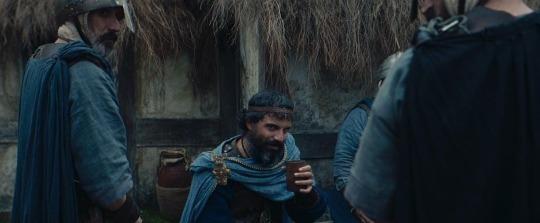

Belasko
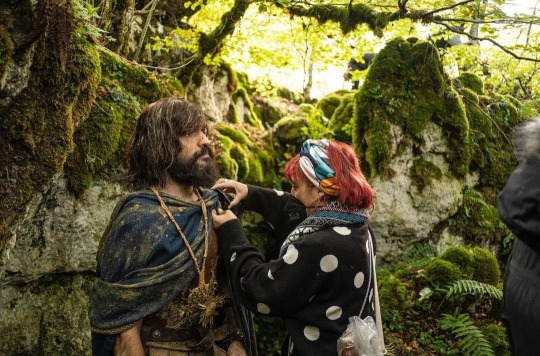
Here's another pic from the filming. It's interesting because Eneko is wearing an amulet of a Eguzkilore.
The Eguzkilore: is a flower of the thistle Carlina acaulis, "the flower of the sun", named for the similarity of its shape with the sun.

According to basque mythology, Amalur, mother earth, created the Eguzkilore to protect humans from evil spirits. A thistle, which, located at the entrances of houses throughout the Basque Country, Navarra and other places of Aragon and Catalonia, symbolizes the sun during the hours of darkness, at night, thus preventing the entry of all evil beings.

This plant and its roots were essential during the plague epidemic that devastated the peninsula during the reign of Charlemagne. And it is that, according to what they say, the antibiotic properties of Eguzkilore helped to deal with this pandemic, hence its name, Carlina, from Charlemagne.

The Eguzkilore probably is going to be an important element of the film. In the Donosti Festival Edurne Azkarate is carrying a piece of wood with a Eguzkilore.
Probably Luxa or Irati gave Eneko a eguzkilore as a protection amulet.

Also the brooch of adult Eneko's outfit could be a reference to the Eguzkilore (idk the form reminds me of that) and the brooch also could be a reference to the coat of arms and the banner of the Kingdom of Navarra (and current COA of the community of Navarra), at least from the central part of the COA.
Pamplona/Navarra will not be a a kingdom until Sancho Garcés I in 905, but maybe this could be a symbol shown in the film, that in the film-universe would be recurrent and would derive into Navarra's banner.
One heraldy symbol related with Eneko is the cross of Eneko Arizta (A silver cross, kick pointed at its lower arm, located in a frank barracks, on a field of azure). It was used as part of the heraldy of Aragon (X), attributed to be Eneko's sigil, but probably that wasn't the case, and it could be a way of the Aragonese monarchs to reaffirm Eneko as their antecesor (although looking into the genealogy, the rulers of the Crown of Castile, Aragon, Portugal and even the Caliphate of Córdoba were descedants of Eneko). It has been used in Aragonese heraldy since Sancho Ramírez (ca. 1043–June 4, 1094), I of Aragon and V of Pamplona. This is his sigil (x).
There are some examples of personal sigils of some Aragonese kings with the cross: like the one from Peter IV (×), one of the sigils of Alfonso V and John II (X)(×) and one of the sigils of Ferdinand II (x)(X)
The cross of Eneko is also part of some coat of arms nowadays, like the shield of the community of Aragon (x) or the one from the Valencian Community (x).
In one of the covers of El Ciclo de Irati comics Eneko appears with a shield of an eagle (×) (in addition, the artwork of the eagle of the shield reminds me a bit of these Visigothic aquiliform fibulae from Alovera) it's similar to the sigil of Sancho VII of Navarra "the Strong" (Tudela, April 17, 1154 -Tudela, April 7, 1234), the last king of the Jimena dinasty in Navarra, his successor was his nephew, Theobald I "the Troubadour" (Troyes, May 30, 1201-Pamplona, July 8, 1253), son of Blanche of Navarra and count Theobald III of Champagne. The sigil of Sancho, a black eagle on a red field (×), is considered the primitive coat of arms of Navarra, but it was switched with the current carbuncle sigil.
Bonus track:
Sometimes in the Aragonese royal heraldy apart from the mantel with the cross of Eneko, ther was also the Royal Crest, that in Aragon was a dragon (×), or the old crest with a bat (x) and a black eagle for Sicily (×).
For the heraldy od Aragonese monarchs of Naples, the crest of the dragon was also used, for example the one from Alfonso V's bastard son, Ferdinand I of Naples (×)
The support may differ, for example Ferdinand II's sigil in his late years have two griffons as supports (×)
The royal crest of Navarra was the feathers of a peacock (×). For example, one of the sigils of John II of Aragon uses this crest (×), as king of Navarra. There's a contrast between the main sigil (x). Probably the two greyhounds have the helmet on their heads covering their eyes because for several years John was blind.
He suffered from cataracts, until on October 12, 1468, at the age of 70, he recovered his sight thanks to the Catalan Jewish surgeon Cresques Abnarrabí who operated the king on both eyes.
Apart from the Navarrese monarchs, John of Austria (Philip II's bastard brother) used a peacock feather crest in one of his sigils (×)
The royal crest of Castile was a lion and a castle (×) and there was an old one with a griffon (×). And the supports of the Castilian coat of arms were often two lions, like the heraldy of John II of Castile and Henry IV (×) or Isabella I (×)
The royal crest of Portugal was a dragon(×) and the supports of the COA were two green dragons (×)
During the Iberian union during the reigns of Philip II, Philip III and Philip IV (before Portugal became independent again) the coat of arms included the Royal crest of the Crown of Castile, Aragon and Portugal (×)
#irati#films#pics#costume design#eneko sagardoy#edurne azkarate#paul urkijo alijo#nerea torrijo#iñigo aranburu#kepa errasti#history#heraldy
3 notes
·
View notes
Text
Events 7.16 (before 1900)
622 – The Hijrah of Muhammad begins, marking the beginning of the Islamic calendar.
997 – Battle of Spercheios: Bulgarian forces of Tsar Samuel are defeated by a Byzantine army under general Nikephoros Ouranos at the Spercheios River in Greece.
1054 – Three Roman legates break relations between Western and Eastern Christian Churches through the act of placing a Papal bull (of doubtful validity) of Excommunication on the altar of Hagia Sophia during Saturday afternoon divine liturgy. Historians frequently describe the event as the formal start of the East–West Schism.
1212 – Battle of Las Navas de Tolosa: After Pope Innocent III calls European knights to a crusade, forces of Kings Alfonso VIII of Castile, Sancho VII of Navarre, Peter II of Aragon and Afonso II of Portugal defeat those of the Berber Muslim leader Almohad, thus marking a significant turning point in the Reconquista and in the medieval history of Spain.
1228 – The canonization of Saint Francis of Assisi
1232 – The Spanish town of Arjona declares independence and names its native Muhammad ibn Yusuf as ruler. This marks the Muhammad's first rise to prominence; he would later establish the Nasrid Emirate of Granada, the last independent Muslim state in Spain.
1251 – Celebrated by the Carmelite Order–but doubted by modern historians–as the day when Saint Simon Stock had a vision of the Virgin Mary.
1377 – King Richard II of England is crowned.
1536 – Jacques Cartier, navigator and explorer, returns home to St. Malo after claiming Stadacona (Quebec), Hochelaga (Montereal) and the River of Canada (St. Lawrence River) region for France.
1661 – The first banknotes in Europe are issued by the Swedish bank Stockholms Banco.
1683 – Manchu Qing dynasty naval forces under traitorous commander Shi Lang defeat the Kingdom of Tungning in the Battle of Penghu near the Pescadores Islands.
1769 – Father Junípero Serra founds California's first mission, Mission San Diego de Alcalá. Over the following decades, it evolves into the city of San Diego, California.
1779 – American Revolutionary War: Light infantry of the Continental Army seize a fortified British Army position in a midnight bayonet attack at the Battle of Stony Point.
1790 – The District of Columbia is established as the capital of the United States after signature of the Residence Act.
1809 – The city of La Paz, in what is today Bolivia, declares its independence from the Spanish Crown during the La Paz revolution and forms the Junta Tuitiva, the first independent government in Spanish America, led by Pedro Domingo Murillo.
1849 – Antonio María Claret y Clará founds the Congregation of the Missionary Sons of the Immaculate Heart of Mary, popularly known as the Claretians in Vic, in the province of Barcelona, Catalonia, Spain.
1858 – The last apparition of the Blessed Virgin Mary to Bernadette Soubirous in Lourdes, France.
1861 – American Civil War: At the order of President Abraham Lincoln, Union troops begin a 25-mile march into Virginia for what will become the First Battle of Bull Run, the first major land battle of the war.
1862 – American Civil War: David Farragut is promoted to rear admiral, becoming the first officer in United States Navy to hold an admiral rank.
0 notes
Text

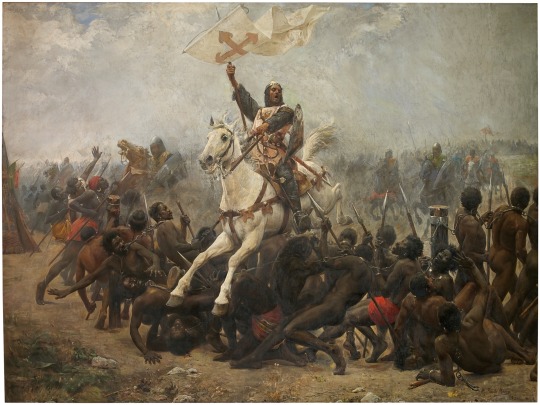
El triunfo de la Santa Cruz en la batalla de las Navas de Tolosa, 1212 (Part of the Reconquista)
by Marceliano Santa María Sedano
Which narrates the brave deed of Alvar Núñez de Lara from Burgos in the battle of Las Navas de Tolosa
According to legend, the Caliph had his tent surrounded with a bodyguard of slave-warriors who were chained together as a human shield to form a defence. The Navarrese force led by King Sancho VII broke thorough his bodyguard. The Caliph escaped, but the Almohads were routed.
#battle of las navas de tolosa#reconquista#reconquest#spain#iberia#crusade#crusaders#art#painting#history#europe#christian#muslim#european#knights#medieval#castile#cavalry#slaves#human shield#knight#king sancho vii#knights templar#spanish#moors#king alfonso viii of castile#castillian#burgos#álvaro núñez de lara#order of santiago
25 notes
·
View notes
Photo

Saint Raymond of Fitero
Commemorated on 1 Febuary
Saint Raymond of Fitero (Spanish: San Raimundo de Fitero) (d. AD 1163) was a monk, abbot, and founder of the Order of Calatrava. As a young man, Raymond felt a religious vocation, and became a canon of the new cathedral at Tarazona, established after King Alfonso I of Aragon reconquered the historic city from the Moors in 1119.
He joined the Cistercian Order in Gascony and, when King Alfonso VII of Castile supported the Order’s expansion into Spain, joined Abbot Durando in establishing a new monastery near the Ebro River at Niencebas. Following Durando’s death, Raymond (who had been prior) was elected his successor. The monks then moved across the Ebro to Castejón, Navarre, and finally built their new monastery at a spot named Fitero, along the frontier between Castile’s La Rioja region and the Kingdom of Navarre. They called their new monastery the Monasterio de Santa María la Real de Fitero.

Monastery of Fitero in Navarre, Spain
When King Alfonso VII died in 1158, Raymond went to Toledo so that the new king, Sancho III of Castile, could confirm the privileges that his father had granted the new monastery. In Toledo, Raymond’s companion, former knight Father Diego Velásquez, learned that Christian leaders planned a major offensive south against the Moors. Furthermore, Sancho promised to grant the strategic town of Calatrava (Calatrava la Vieja) on the Guadiana River to anyone who promised to defend it from the Moors, who might themselves be planning a sally north to test the new Christian king. His father had reconquered Calatrava in 1147, and it was on the road from Toledo (reconquered in 1085) to Córdoba and Moorish strongholds.

Saint Raymond of Fitero meeting with King Sancho III of Castile
Encouraged by Father Diego, Raymond took up the challenge, and Sancho granted them the privilege of defending Calatrava. With the support of the Archbishop of Toledo, Raymond organized an army that successfully prevented a Moorish attack on Calatrava that year.
This success prompted Raymond to found the military Order of Calatrava, organized along Cistercian lines. Raymond then moved some fighting monks south from the relatively safe Fitero in Navarre to Calatrava in what became the Castilla-La Mancha province. He himself retired to Ciruelos, near Ocaña, where he died in 1163. On 26 September 1164, Pope Alexander III recognized the new military order, which would play a crucial role in the Reconquista.
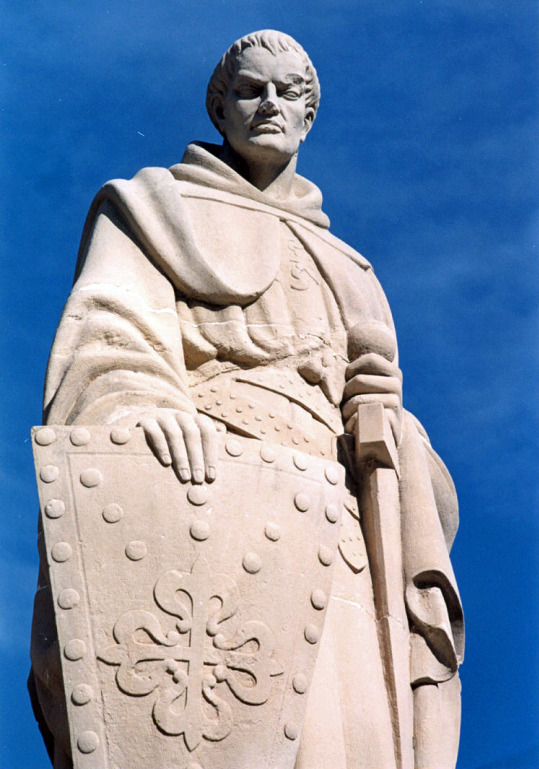
#Alfonso VII of León and Castile#Cistercians#Crusades#Order of Cistercians#Knights of Calatrava#Reconquista#Saint Raymond of Fitero#St. Raymond of Fitero#saints#Sancho III of Castile
25 notes
·
View notes
Photo

Sancho VII the Strong - by Nordheimer
57 notes
·
View notes
Photo
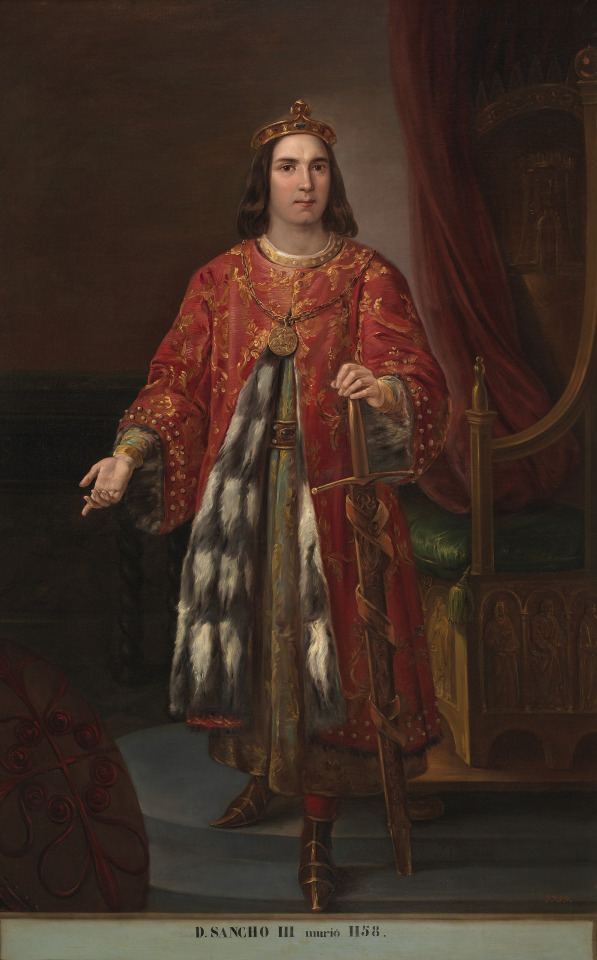
Sancho III, rey de Castilla. By José Castelaro y Perea.
King Sancho III (1134–1158), called ”the Desired”, was King of Castile and Toledo for one year, from 1157 to 1158. He was the son of Alfonso VII of León and Castile and his wife Berengaria of Barcelona, and was succeeded by his son Alfonso VIII. His nickname was due to his position as the first child of his parents, born after eight years of childless marriage.
During his reign, the Order of Calatrava was founded.
#José Castelaro y Perea#monarquia española#reyes de españa#reyes de castilla#rey de castilla#kingdom of castile#spain in the middle ages#house of ivrea#casa de borgoña#king sancho iii
7 notes
·
View notes
Photo







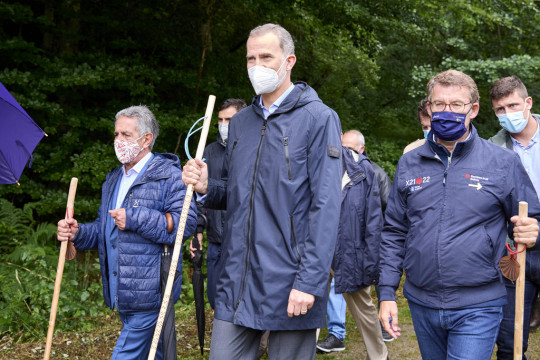


July 12, 2021: King Felipe and Queen Letizia attended an event celebrating the Jacobean Year 2021-2022.
They walked the section of the Camino de Santiago to the urban complex of Orreaga - Roncesvalles and next to the Sancti Spiritus chapel, an old pilgrim cemetery. After a brief meeting with the members of the Government of Navarra and the authorities responsible for the Departments of Culture of the Autonomous Communities, the King and Queen went to the Priory House, where they were received by the Archbishop of Pamplona and Tudela, Monsignor Francisco Pérez González; the prior of that Royal Collegiate Church, Bibiano Esparza Tres, and by the members of the Cabildo of the Royal Collegiate Church of Santa María de Roncesvalles, and signed in the Gold Book of Navarra.
Felipe and Letizia also visited the Collegiate Church of Santa María de Roncesvalles where the event of commemoration of the Jacobean Year 2021-2022 was held with speeches and a musical performance with a selection of French and Spanish baroque music pieces, interpreted by the soprano Raquel Andueza and the La Galanía Group. After finishing the commemorative event, they went to the Chapel of San Agustín, where a floral offering was made in front of the tomb of the King of Navarre, Sancho VII el Fuerte.
The visit ended with a tour of the chapel and a meeting with the attendees.
#King Felipe#Queen Letizia#King Felipe of Spain#Queen Letizia of Spain#King Felipe VI#King Felipe VI of Spain#Official Event#20210712a#July 2021
20 notes
·
View notes